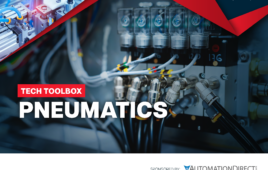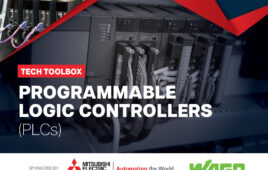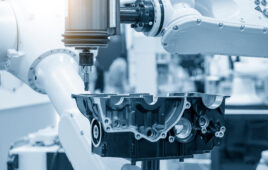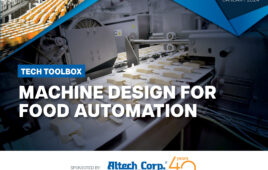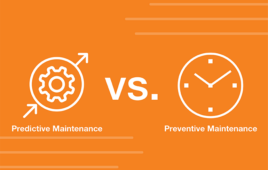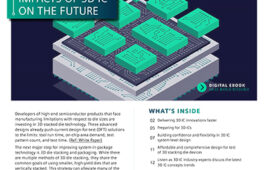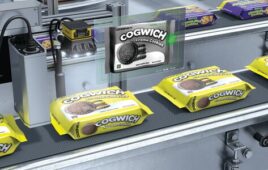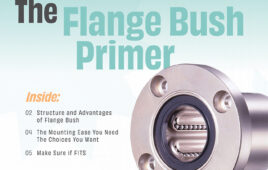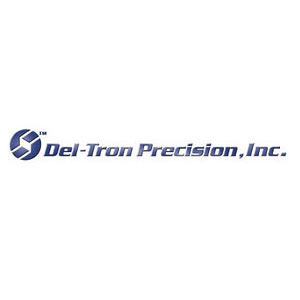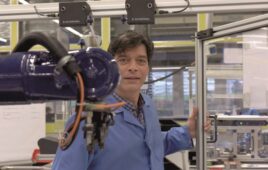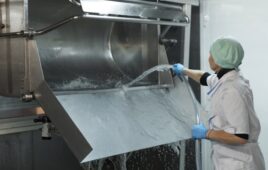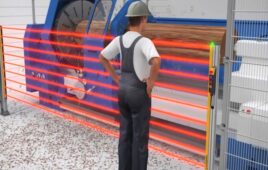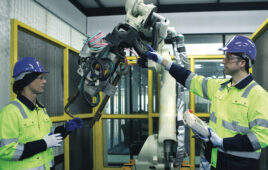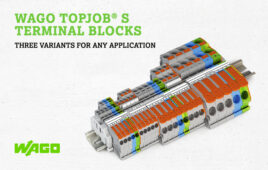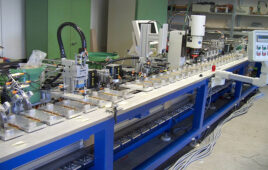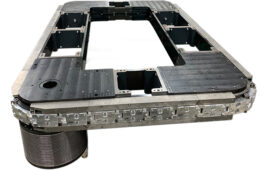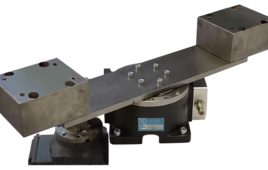Dig into the specs and story of an innovative DC power solution that works with every AC input for DC powered components. Sponsored by Altech Every industry faces challenges with consistent power supply. When facilities lose power unexpectedly, a variety of problems can ensue. Altech, a leader in automation and control components, addresses these issues…
Tech Toolbox: Machine design for packaging
Packaging machinery uses cutting-edge automation, and it’s no wonder. Facilities that parcel products need to deliver high throughput, but modern consumers demand smart packaging in the form of no-fuss containers that protect everything from M&Ms to patio furniture. What’s more, there’s a continuous drive to customize packages and let consumer-facing companies wrap products for bulk…
Tech Toolbox: Pneumatics
Pneumatics is a fluid power technology similar to hydraulics in that it transmits force through a pressurized medium to create useful work. However, pneumatic technology differs from hydraulics in every critical fashion — compressibility. To be fair, hydraulic oil compresses as well, but only 0.4 percent every thousand psi or so. However, in the simplest…
Tech Toolbox: Programmable logic controllers (PLCs)
Programmable logic controllers or PLCs are microprocessor-based components that serve as the programmable smarts for simple or isolated applications. They’re also finding increasing use on integrated machinery and automated installations with extensive IIoT connectivity. In this new Tech Toolbox, the editors of Design World detail how PLCs came to replace relay-based controls as well as…
How a new zero-backlash planetary gearbox eliminates vibration
Industrial robot arms can have as many as ten articulated joints. Each joint is its own mechanical system with an actuator, drive, gearbox, controller, and other components. Factors like misalignment, imbalance, and field noise create cumulative stress that impacts the precision of end-of-arm tools (EOAT) like grippers and welding torches. The cycloidal and strain wave…
Tech Toolbox: Machine design for food automation
Motion system designs run millions of automated food-manufacturing designs worldwide — including those in employed in grain milling, pasta making, and baking; fish and poultry processing; beer, wine, and spirit production; slaughtering and meatpacking; fruit, vegetable, and baby-food packaging, canning, jarring, and freezing; candy making; dairy and cheese making; and oils and fat extraction and…
Omron’s systematic approach to a better PCB connector
A new design ensures high contact reliability with lower insertion force Connectivity is an intrinsic part of today’s industrial automation and robotic applications. An ever-increasing number of devices and peripherals depend on stable connections to transmit power and signals to the printed circuit board (PCB). Managing these connections is labor-intensive, leading many OEMs away…
AMUG Conference: AM Users Sharing Experiences and Initiating Collaborations
By Shannon VanDeren, AMUG President, and Ed Graham, AMUG Director, Education and Conference The 2024 AMUG Conference is rapidly approaching. The five-day event opens on March 10, 2024, in Chicago, Illinois, to host additive manufacturing (AM) users in ways that advance their skills, broaden their horizons and ignite new collaborations. On the surface, the AMUG…
JIECANG Linear Actuator Updates Cleaning Robot Automation
Discover how JIECANG is leading the way in the sanitation revolution with cutting-edge linear actuators in upgrading cleaning robot automation.
Get More Done Faster with CAD360
By Kate Nadeau, Marketing Manager CAD360 – Custom Conveyor Models in Minutes CAD360 is an all-in-one online conveyor modeling platform; providing 2D and 3D models and images within minutes. Registration is simple and free; and once registered you can access over 30 different conveyor platforms; in addition to a dozen pre-configured conveyor system layouts. CAD360…
Predictive Maintenance vs Preventive Maintenance
Balancing Costs & Risks for Optimal Machine Performance By Jared Worth, Content Writer Any maintenance schedule serves the purpose of keeping machinery running as long as possible and without defects. However, there are different types of maintenance schedules that take various approaches to the process. Two of the most common are predictive maintenance and preventive…
Impacts of 3D IC On The Future
Developers of high-end semiconductor products that face manufacturing limitations with respect to die sizes are investing in 3D stacked die technology. These advanced designs already push current design-for-test (DFT) solutions to the limits: tool run time, on-chip area demand, test pattern count, and test time. The next major step for improving system-in-package technology is 3D…
Automate In-Line Packaging OCR with Easy-to-Use AI
Many industries face increasing compliance requirements, consumer demand for detailed lot-level package information, and competitive pressures for supply chain speed and efficiency. Faced with strict traceability and anti-counterfeiting regulations, the pharmaceutical industry has led the way in using optical character recognition (OCR) to ensure security end-to-end in its supply chains. This required significant investment, the…
The Flange Bush Primer
The flanged bush eliminates the need for a housing. The flange connects directly to the assembly making the mounting easy. NB’s round, square or two-side cut Flange Slide Bush lines offer the best of both worlds – the benefits of a slide bush with the mounting ease of a flange. When your application calls for…
Linear-Motion Solutions for the Design Engineer Tech Tips
Recirculating Slide Guides Recirculating slide guides excel in three areas: applications needing longer strokes, designs with space constraints and configurations where cost is a primary concern. Because of the unique design, travels are only limited by the maximum rail length of each profile size.
SAFER Workplace
The SAFER Workplace initiative promotes workplace safety to reduce the potential of near misses, accidents, and injuries. The SAFER acronym is based on the 5 fundamental steps used to conduct a risk assessment and stands for STOP, ASSESS, FORMULATE, EXECUTE, and REVIEW. These steps are fundamental to properly addressing any concerns such as unsafe operations…
Calculating Safety Distances
Requirements for the proper placement of safety guards and presence sensing devices Applying safeguards to equipment and machines may lead to a false sense of safety if not applied correctly. This paper explores the often overlooked practice of determining the minimum safe distance or height at which a hard guard or protective device should be…
Sanitary And Hygienic Design Standards
An overview of US and Canadian standards for food industry Hygiene and sanitation are key issues in the food processing industry to prevent food borne illnesses. It influences the design of machines used in areas that need to be constantly cleaned. It is important when selecting safety devices or command devices for food processing machines…
Selection Guidelines For Safety Light Curtains
The four main options to consider in selecting the right Safety Light Curtain for your application. Safety light curtains are a viable safeguarding option for point of operation or perimeter guarding. Choosing the right one is not terribly complicated, once a thorough risk assessment is performed. It helps to define the Type, Resolution, Protection field,…
Workplace Safety: Safeguarding Robots and Robot Cells
Protect personnel working directly with or around robots. Learn which standards are relevant for robot applications, understand robot functionality and limitations and how they affect typical methods of safeguarding robots, and review safety considerations for Collaborative Robots. Sponsored content by Schmersal
WAGO TOPJOB® S Terminal Block Variants: What is Best for Your Application?
By Barry Nelson, Public Relations Coordinator, WAGO Corporation Push-In Connection with tool operation: With any push-in terminal block, solid or ferruled wires can be inserted into the block without the use of any tool in order to make a connection. This actuation style requires the insertion of a tool only for the introduction of stranded…
LFA Precision Conveyor used in Medical Device Manufacturing
In automated medical device manufacturing, the implementation of precision link indexing conveyors presents a multitude of advantages from an engineering perspective. In regards to the medical industry in particular, the LFA precision link conveyor could be one of the best fits for its application. This is due to the very clean design, high accuracy, high…
LATC Precision Link Conveyors
Motion Index Drives, Inc. line of precision link conveyors are built to be the heart of a linear manufacturing machine requiring high accuracy, speed, and quality. The precision link conveyor is a conveyor designed to have an automation process done on it, from start to finish. The conveyor indexes a precise stroke (from a few…
Electric Vehicle Battery Manufacturing
Motion Index Drives is here to help manufacturers adapt in this progressive shift into Electric Vehicle Production with a variety of precise and flexible solutions to improve the efficiency of EV battery manufacturing. The new RTX350 high speed cam indexing rotary table is our newest and smallest indexer of our extensive line of cam indexers.…
How to Increase Rotational Capacity for a Retaining Ring
Importance of Retaining Ring RPM Performance By Justyna Rapacz, Marketing Engineer With rotational capacity requirements of modern applications higher than ever, many engineers struggle to find retaining rings that can withstand high speeds. If an engineer settles for alternate solutions to retaining rings, it often results in more assembly time and costs more money, or even worse,…



